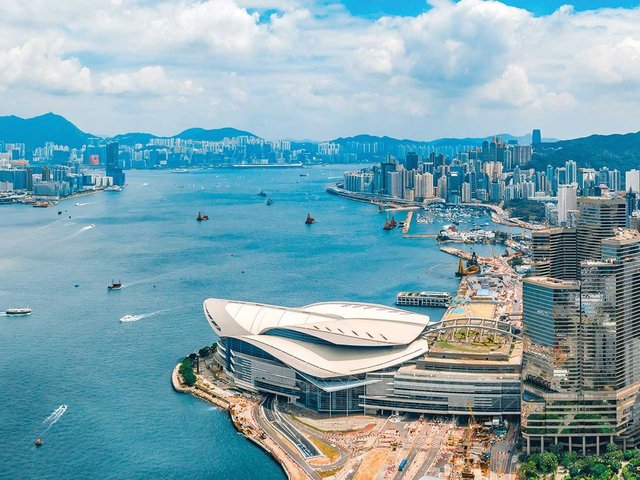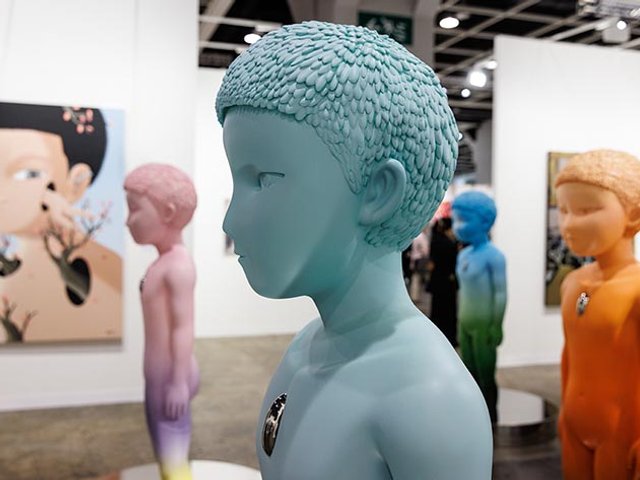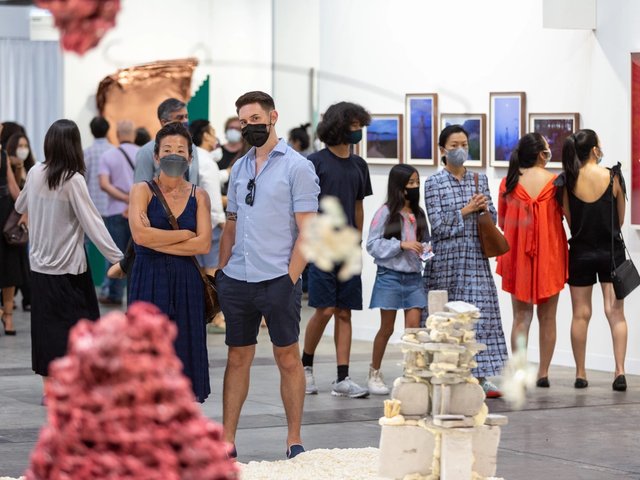At the two-day preview of this year's Art Basel in Hong Kong (until 29 May), remote sales and an Asian art focus kept the fair buoyant—though not necessarily future proof—in spite of reduced physical size, visitor numbers and international exhibitors.
Held at the Hong Kong Convention and Exhibition Centre in Wan Chai, the number of exhibitors has increased substantially from last year’s 104 to 130 this year. However, 75 regional and international galleries opted for satellite booths, despite easing travel restrictions: the mandatory quarantine period for inbound overseas travellers to the Chinese special administrative region has been reduced from 21 to seven days. According to sources on the ground, there seemed to be few international visitors, including an absence of well-known collectors from mainland China.
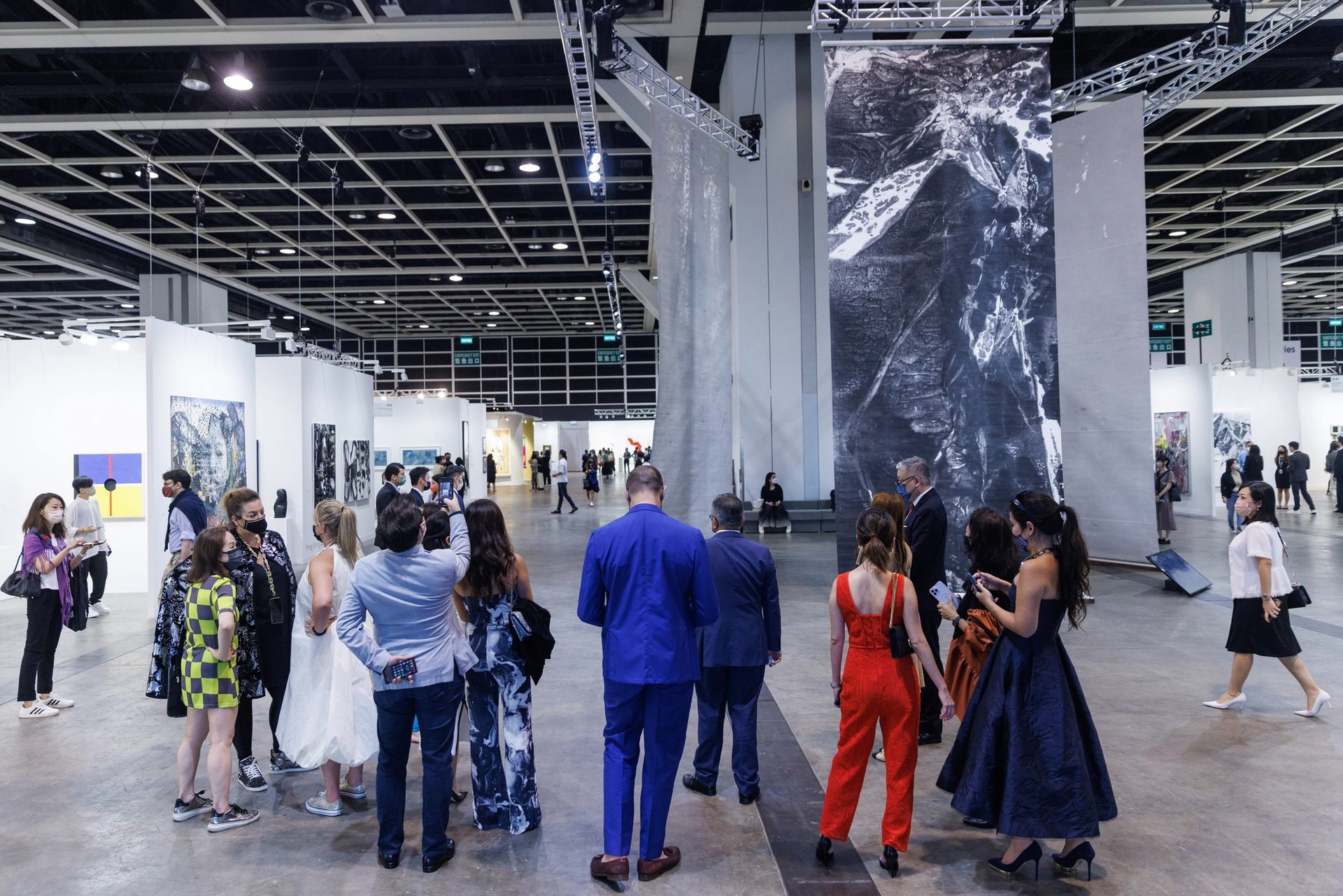
Visitors attend Art Basel in Hong Kong 2022. Courtesy of Art Basel
Fair visitors such as the Hong Kong-based consultant Leslie Tsang noted the small size of this year's edition. “I suspect because of the pandemic and the quarantine situation here in Hong Kong, a lot of international gallerists and buyers were not able to come to Hong Kong, so we only saw art filling up one floor of the space compared to two or three floors in the convention centre in early years,” she says.
Additionally, at least one veteran art dealer at the convention centre observed that fewer local visitors were in attendance when compared to 2021, due to Hong Kong residents eager to take a break from the city and travel after months of pandemic restrictions.
However, this did not seem to affect sales or buyer interest, especially since galleries made efforts to connect with collectors remotely, reserving and placing works even before the fair began. According to the former chairman of Christie’s Asia and founding partner of Lévy Gorvy Asia, Rebecca Wei, who was helming the inaugural booth of the gallery's new venture LGDR, there is a higher level of flexibility towards remote sales compared to pre-pandemic fairs, with collector appetites evolving.
“Travel restrictions have affected offline viewing, but they have also made art more desirable. Since the beginning of last year, we have sold a large proportion of works remotely, even a million-dollar art piece, which was a rarity in the past. There is a significant change undergoing on collectors’ decision-making habits in response to the pandemic,” she says.

White Cube's booth at Art Basel in Hong Kong 2022, featuring Antony Gormley's FEEL (2016). Courtesy of White Cube.
While these figures are not independently verified, White Cube sold seven works for a total of $1.3m on the first VIP day, including Antony Gormley’s FEEL (2016) for £450,000. Meanwhile, David Kordasky sold six Lesley Vance works, each priced from $50,000 to $100,000, at the end of the second preview day. Hauser & Wirth sold 13 works, including George Condo’s Pink and White Profile with Green Eye (2021) at $2.6m to a South Korean private museum.
LGDR, which showed two Banksy paintings, Flower Thrower (2006) and Girl with Balloon (2006) at their booth, also reported receiving buyer interest in works by Pat Steir, Marilyn Minter, Joel Mesler, Tu Hongtao, Zhang Zipiao and Michael Lau.
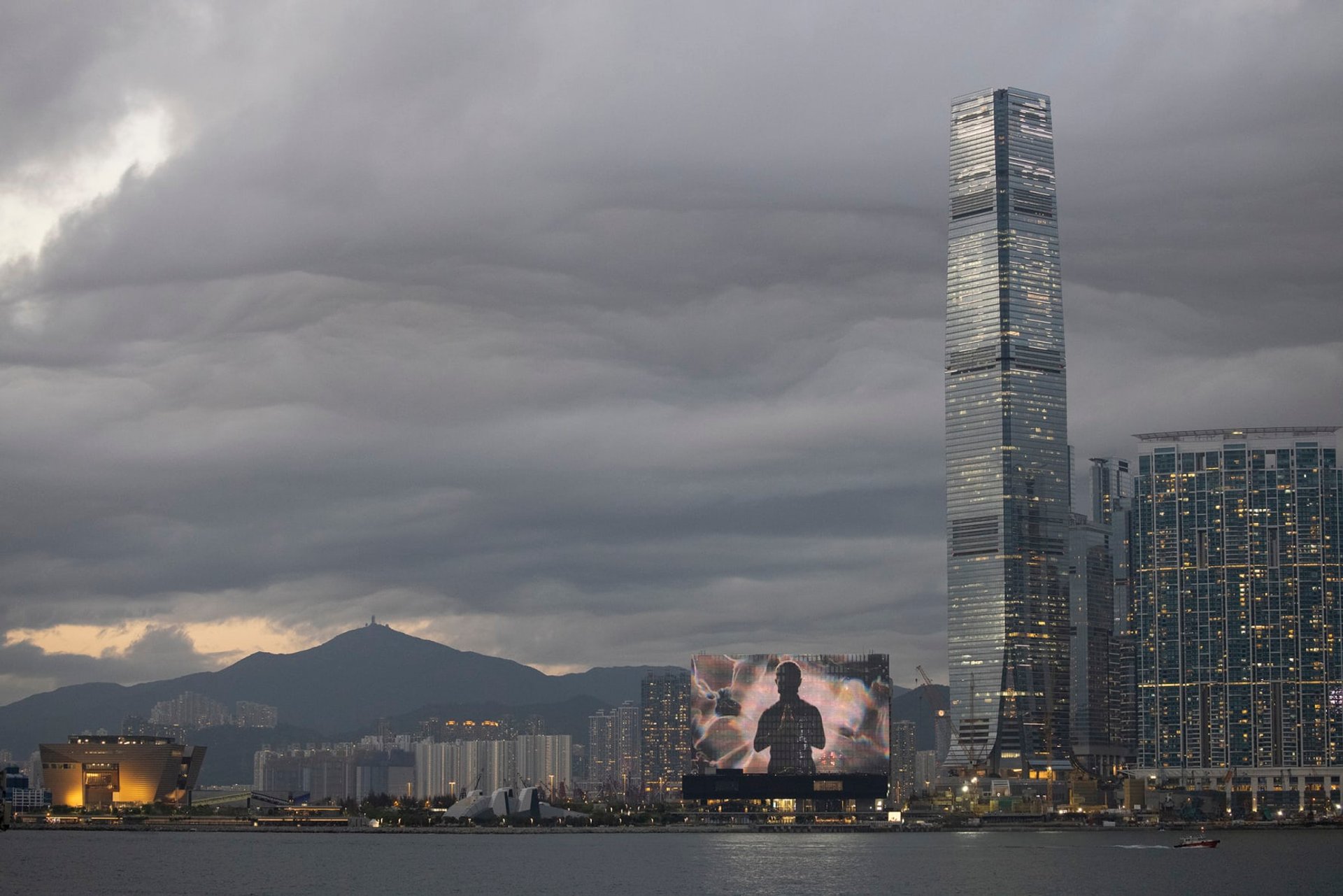
Ellen Pau’s The Shape of Light (2022), a site-specific co-commission by M+ museum and Art Basel. Photo: Lok Cheng. Courtesy of Ellen Pau and Art Basel
The fair’s strongest draw this year was its heightened focus on Asian art and artists from the Hong Kong pioneer video artist Ellen Pau’s The Shape of Light (2022), a site-specific co-commission by M+ museum and Art Basel, screened on the facade of M+ and visible across the Victoria Harbour nighttime skyline until June, to Carla Chan’s Fading Space of Dawn (2022), bringing together digital media, AR technology, and sculptural mineral elements at Tai Kwun Centre for Heritage and Arts.
In addition to focusing on Hong Kong digital artists, the blockchain platform Tezos also staged its first NFT show at the fair. However, according to the crypto investor and art collector Jehan Chu, there needs to be more effort on the digital front. “We are still stuck in 2020 as digital art, web3 and NFTs seem to lack any major consideration outside of Bank Gallery’s NFT and the Tezos NFT booth.”



